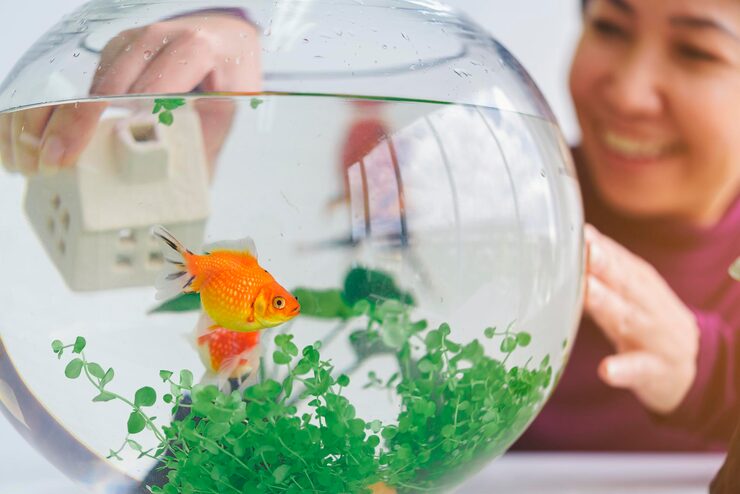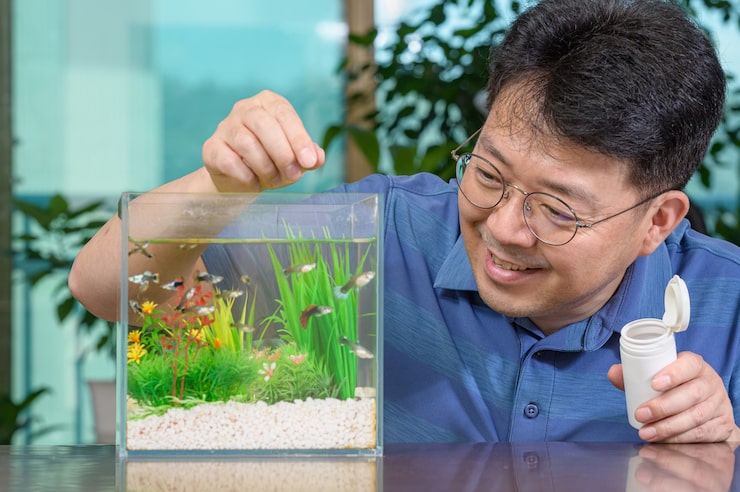Feeding your fish isn’t just about tossing flakes into the tank and watching them disappear. It’s an art form that combines science, observation, and genuine care for these fascinating aquatic creatures. Think of fish food as the foundation of aquatic health – every vibrant color, graceful movement, and bubble that rises to the surface is directly influenced by the quality and variety of nutrition you provide.
Understanding Your Fish’s Dietary Personality
Just like people have different food preferences, fish come with unique dietary requirements. Carnivorous fish are the meat lovers of the aquatic world, requiring protein-rich diets that mirror their natural hunting instincts. These underwater predators thrive on bloodworms, brine shrimp, and high-protein pellets that fuel their active lifestyles.
Herbivorous fish prefer algae, spirulina, and plant-based foods that provide the fiber and nutrients they would naturally graze on in rivers and lakes. Meanwhile, omnivorous fish – the majority of popular aquarium species – enjoy the best of both worlds, needing a balanced mix of proteins and plant matter to maintain optimal health.
Understanding your fish’s natural diet is like learning their love language. When you provide food that matches their biological needs, you’re speaking directly to their instincts and helping them express natural behaviors.
The Spectacular World of Fish Food Types
Flake foods remain the classic choice for good reason. These lightweight morsels float beautifully on the surface, creating feeding frenzies that bring shy fish out of hiding. They’re perfect for community tanks but dissolve quickly, so timing is crucial.
Pellet foods are the workhorses of fish nutrition, offering durability and variety in size. From tiny micro-pellets for neon tetras to large floating pellets for goldfish, these compact nutrition bombs provide consistent feeding experiences without immediate dissolution.
Frozen foods represent the gourmet dining experience of the aquarium world. Bloodworms, daphnia, and brine shrimp retain natural nutritional value while providing hunting excitement that keeps fish mentally stimulated.
Live foods offer the ultimate natural feeding experience. Watching fish chase and capture live prey awakens primal instincts and provides exercise that manufactured foods cannot match. Baby brine shrimp and micro worms not only nourish but enrich your fish’s environment with natural behaviors.

The Art of Homemade Fish Food
Creating your own fish food transforms feeding from routine task into creative expression. Homemade gel foods combine nutrition control and cost effectiveness. Using ingredients like canned salmon, spirulina powder, and unflavored gelatin, you can create customized nutrition rivaling expensive commercial alternatives.
The process becomes meditative – blending fresh ingredients, watching mixtures transform, and cutting perfect portions for your aquatic family. Many aquarists discover increased fish vitality and enhanced colors with homemade foods, likely due to absent preservatives and fillers.
The Dangerous Territory of Overfeeding
Overfeeding represents one of the most devastating aquarium mistakes. The temptation to show love through food creates harmful paradoxes. Excess food decomposes rapidly, creating toxic ammonia spikes that kill fish faster than starvation.
Visual signs include cloudy water, algae blooms, and substrate accumulation. Fish stomachs are approximately eye-sized – much smaller than most imagine. Proper feeding amounts should be consumed within two to three minutes, with no remaining food.
Conclusion
Fish food represents more than sustenance – it’s daily opportunity to connect with aquatic companions and demonstrate care commitment. Every feeding session becomes observation, learning, and bonding moments that strengthen relationships with your underwater world. Make every meal count, and watch your aquarium transform into a thriving ecosystem where every inhabitant radiates health and vitality.








